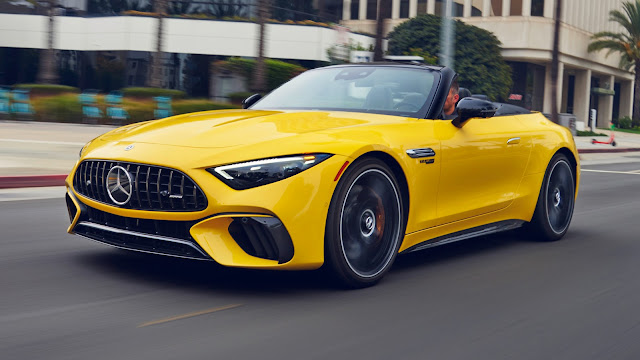The Mercedes SL is a status symbol that delivers style and performance unlike any other sports car on the road
Mercedes has expanded its range to include all sorts of sports cars, from supercars to hot hatchbacks, but the Mercedes SL is still the epitome of the open-top, two-seat grand tourer. The model has been around for more than 60 years, and the sixth generation model is a clear evolution of previous generations, because it offers luxury motoring in an understated package, while top-spec models are deceptively quick.
The original SL was the 300SL Gullwing, a two-seat coupe with clever doors that were hinged from the roof and opened upwards, a trick later emulated by the SLS supercar. This car had the in-house model code W198, and was built from 1954 to 1957, when it was replaced by the 300SL Roadster, which was the same car but with a folding fabric roof. This was built from 1957 to 1963.
The W113 SL, known as the Pagoda by enthusiasts thanks to its detachable hard top, arrived in 1963 and continued in production until 1971. It was replaced by the R107, which returned to a fabric roof and remained in production for almost 20 years, only being replaced by the R129 in 1990. This model lasted for over a decade, when it was replaced by the R230 in 2002. The SL evolved by introducing the folding hard-top from the SLK, while official AMG models joined the range, too.
• Mercedes SL 400 vs Lexus LC 500h
While the R230 went off sale in 2011, we had to wait until 2013 for its replacement, the R231, which is the current sixth generation model. It's very much an evolution of the last model, with a folding hard top and lighter construction helping to boost performance and efficiency. AMG models formed the bulk of the range, while an update in 2017 saw new engine and gearbox combinations added to the line-up.
Infiniti Car Price USA, New Infiniti Cars - New! - Jeep Car Price USA, New Jeep Cars - New!



